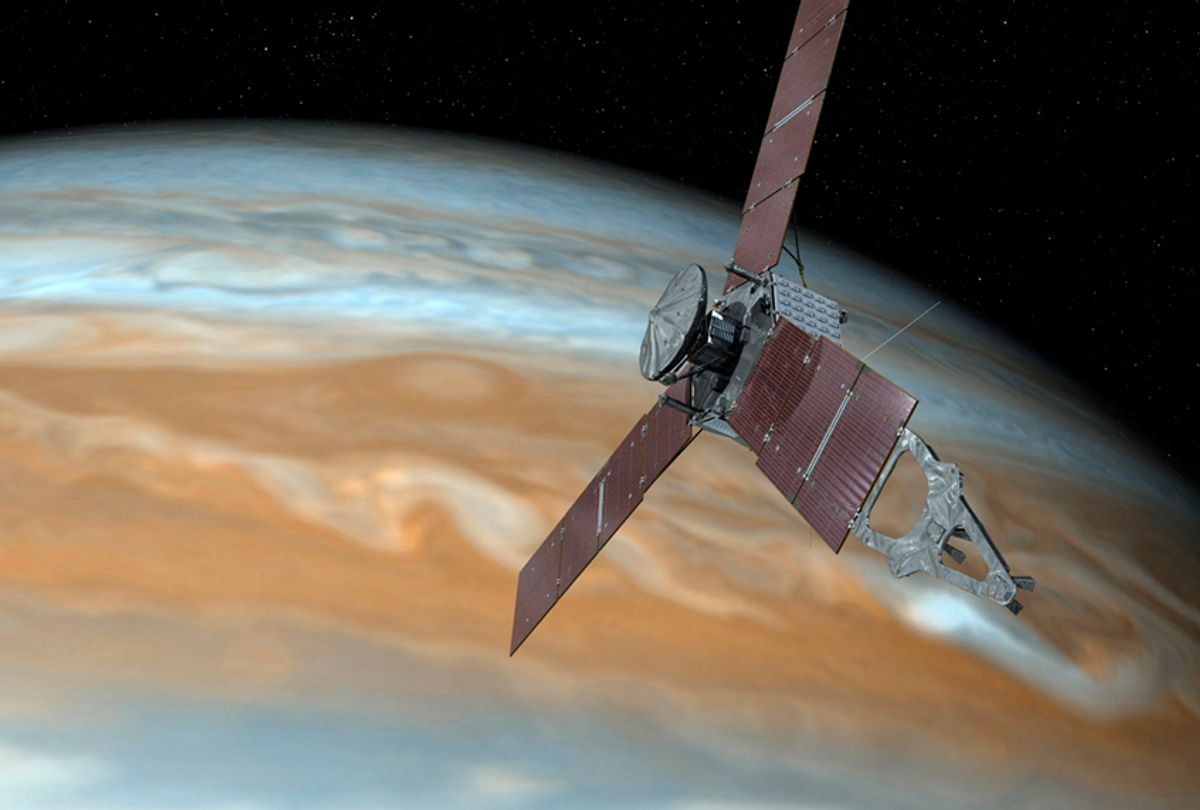In the 2004 climate disaster film "The Day After Tomorrow," the effects of climate change culminate in the emergence of three catastrophic "superstorms," depicted as a trio of continent-wide cyclonic storm systems that cover much of the Earth.
If you thought three giant cyclonic vortices sounded devastating, don't visit Jupiter. Between its north and south poles, it has at least fourteen, including the Great Red Spot.
Massive cyclones swirling around Jupiter’s north and south poles are the latest discoveries to result from NASA’s Juno spacecraft, currently orbiting Jupiter. The cyclones, according to NASA, are “lasting atmospheric features” and “unlike anything else encountered in the solar system.” The new research was published in the journal Nature.
The existence of these cyclones was previously unknown because Jupiter's poles are not visible from Earth; moreover, no previous satellites had orbited Jupiter in a manner as to view its poles' weather patterns in detail, as Alberto Adriani, Juno co-investigator from the Institute for Space Astrophysics and Planetology in Rome, and lead author of the paper, explained to NASA.
“Prior to Juno we did not know what the weather was like near Jupiter’s poles. Now, we have been able to observe the polar weather up-close every two months,” he said in a statement. “Each one of the northern cyclones is almost as wide as the distance between Naples, Italy and New York City — and the southern ones are even larger than that. They have very violent winds, reaching, in some cases, speeds as great as 220 mph (350 kph). Finally, and perhaps most remarkably, they are very close together and enduring. There is nothing else like it that we know of in the solar system.”
To put this in Earthly context, a category 5 hurricane, according to the Saffir–Simpson Scale, is anything below 157 miles per hour. Interestingly, images of these polar cyclones depict a starkly different Jupiter than what most think of when they envision the gas giant.
Scott Bolton, principal investigator of Juno from the Southwest Research Institute, San Antonio, described the finding as a “curve ball.”
“These astonishing science results are yet another example of Jupiter’s curve balls, and a testimony to the value of exploring the unknown from a new perspective with next-generation instruments,” he said in the NASA statement.
According to the report in Nature, eight circumpolar cyclones surround one cyclone in the north pole, with diameters ranging from 2,500 to 2,900 miles. Five circumpolar cyclones surround one near the south pole, with diameters ranging from 3,500 to 4,300 miles. The findings may help researchers better understand the gravity signature of the jets and how they relate to activity deep within Jupiter.
These unprecedented findings have only led to more questions for researchers — including, why do these cyclonic vortices appear to exist individually, rather than combine?
“The question is, why do they not merge?” said Adriani. “We know with Cassini data that Saturn has a single cyclonic vortex at each pole. We are beginning to realize that not all gas giants are created equal.”



Shares